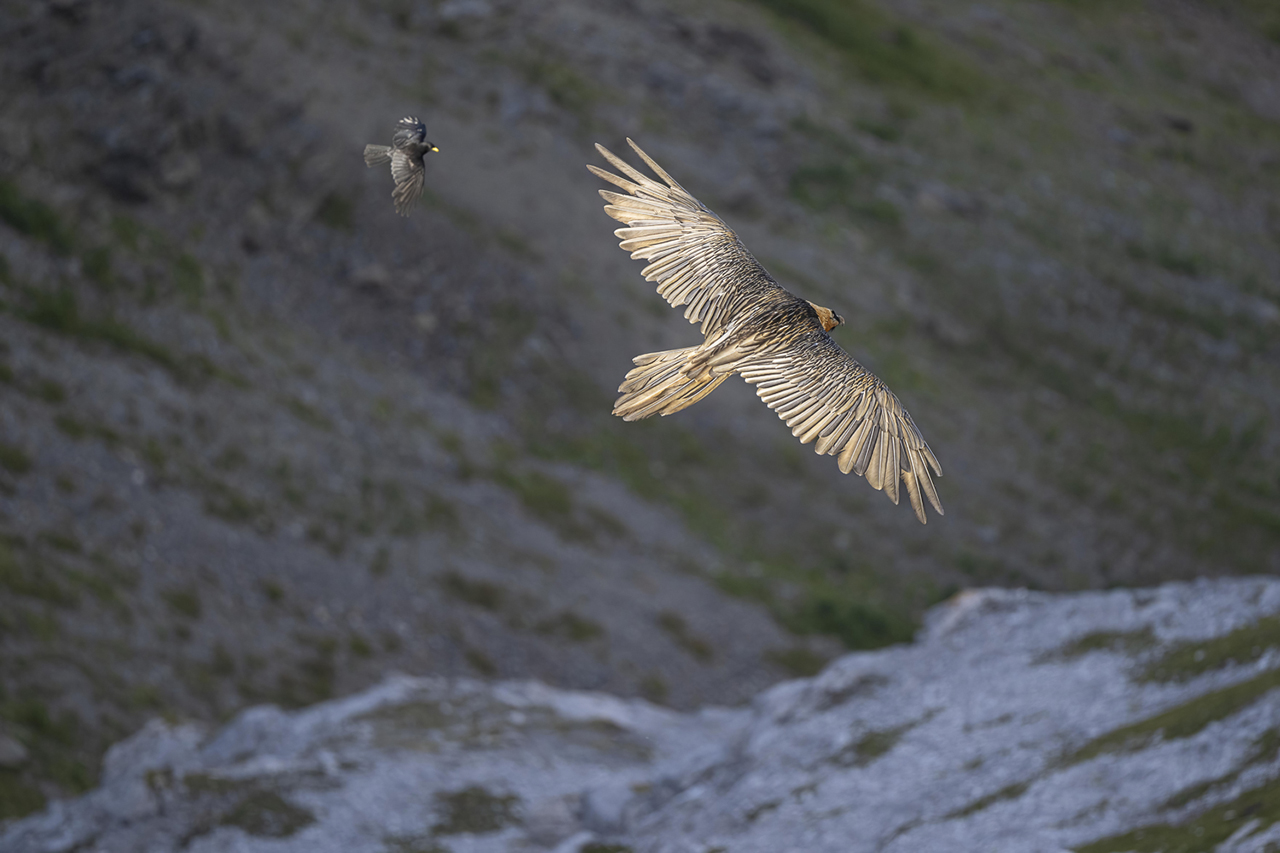To observe them in flight, close to each other, they almost make one laugh, such is the difference in size.
The alpine chough Pyrrhocorax graculus literally disappears in comparison with the bearded vulture Gypaetus barbatus, which hovers with outstretched wings.
If we then think that the little corvid is intentionally trying to disturb the great vulture in order to drive it away, then the feat cannot but appear decidedly comical.
One thinks: no, he’ll never make it, what could he, so tiny, do against a giant with a wingspan of 280 cm?
In nature, it is precisely the small birds – even if they are usually gathered in large flocks – that carry out the mobbing, i.e. the disruptive action against the large diurnal and nocturnal birds of prey. The aim is to ward off a potential threat or competitor for food.
On this occasion, too, there were several choughs cooperating, – flying around the bearded vulture and hinting at a few swoops -, although only one can be seen in the frame.
The bearded vulture, or rather the vultures, because there were two adults flying – to my great satisfaction – in front of the telephoto lens, did not seem much concerned about the choughs.
They continued unconcernedly to patrol the area, performing twirls and glides, while the last gleams of the evening light caressed their slender silhouettes and highlighted the extraordinary perfection of their design and the beauty of their plumage against the dark background of the valley, already reached by the first shadows of evening.

